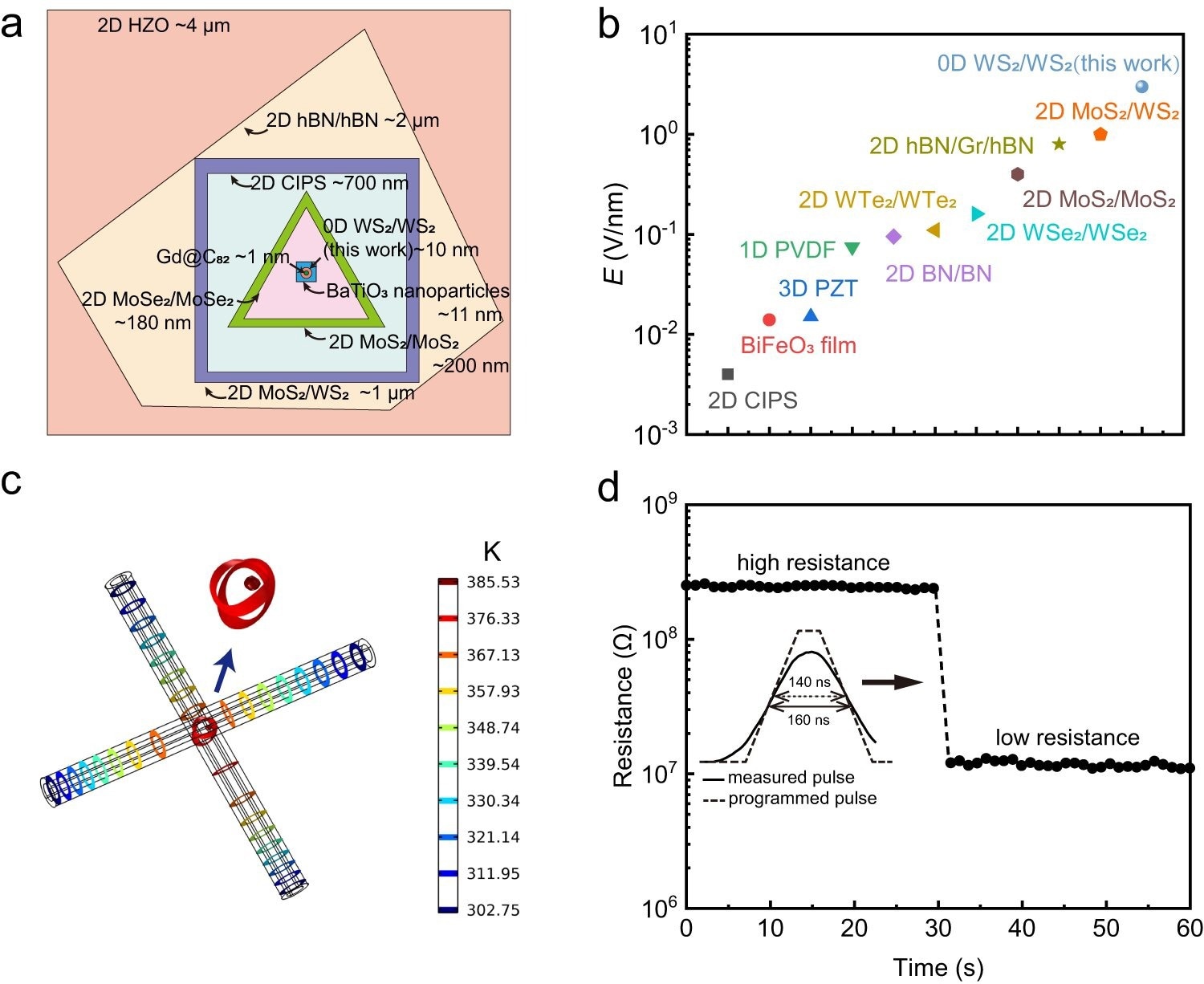The size restriction of conventional ferroelectric effects has been broken by recent research, which has confirmed through theoretical models and experimental data that solid-state ferroelectric effects can be exhibited by structures with as little as 5,000 atoms.
 The features of the 0D vdW interfacial ferroelectricity. Image Credit: Nature Communications (2023). DOI: 10.1038/s41467-023-41045-8
The features of the 0D vdW interfacial ferroelectricity. Image Credit: Nature Communications (2023). DOI: 10.1038/s41467-023-41045-8
A collaborative team from Israel and China conducted the studies, which were published in Nature Electronics and Nature Communications under the names “Ferroelectricity in zero-dimensional” and “0D van der Waals interfacial sliding Ferroelectricity,” respectively.
Joseph Valasek developed the ferroelectric effect in the early twentieth century, and it provides a significant technological approach to information storage. Traditional ferroelectric effects have size constraints.
Prof. Guo Yao and Prof. Alla Zak stated, “When the size of traditional ferroelectric materials decreases, the significant influence of depolarization field can cause the original polarization characteristics to disappear. This size effect limits the application of ferroelectric materials in high-density storage devices.”
Prof. Guo Yao of the Beijing Institute of Technology, Prof. Alla Zak of the Holon Institute of Technology, and collaborators used tungsten disulfide nanotubes to create a nanoscale interface with approximately 5,000 atoms, and they observed resistance change and hysteresis phenomena in ferroelectric diodes.
Further experimental and theoretical verification proved that the ferroelectric diode’s electrical behavior was caused by lattice slip at the interface, allowing the device to generate resistance changes ideal for information storage and programmable photovoltaic responses over almost the entire visible light wavelength range.
The researchers added, “We are surprised that a 5,000-atom interface system can produce such rich functionality.”
Prof. Reshef Tenne of the Weizmann Institute of Science in Israel, a co-author of this study, feels that downscaled ferroelectricity offers significant benefits for future high-density information storage. He also feels that this finding has significant implications for the size reduction of ferroelectric devices.
Journal References:
Niu, Y., et. al. (2024) 0D van der Waals interfacial sliding Ferroelectricity. Nature Communications. doi:10.1038/s41467-023-41045-8
Sun, Y., et. al. (2002) Mesoscopic sliding ferroelectricity enabled photovoltaic random access memory for material-level artificial vision system. Nature Communications. doi:10.1038/s41467-022-33118-x
Zeissler, K. (2024) Ferroelectricity in zero dimensions. Nature Electronics. doi:10.1038/s41928-023-01085-w
Source: https://en.ustb.edu.cn/